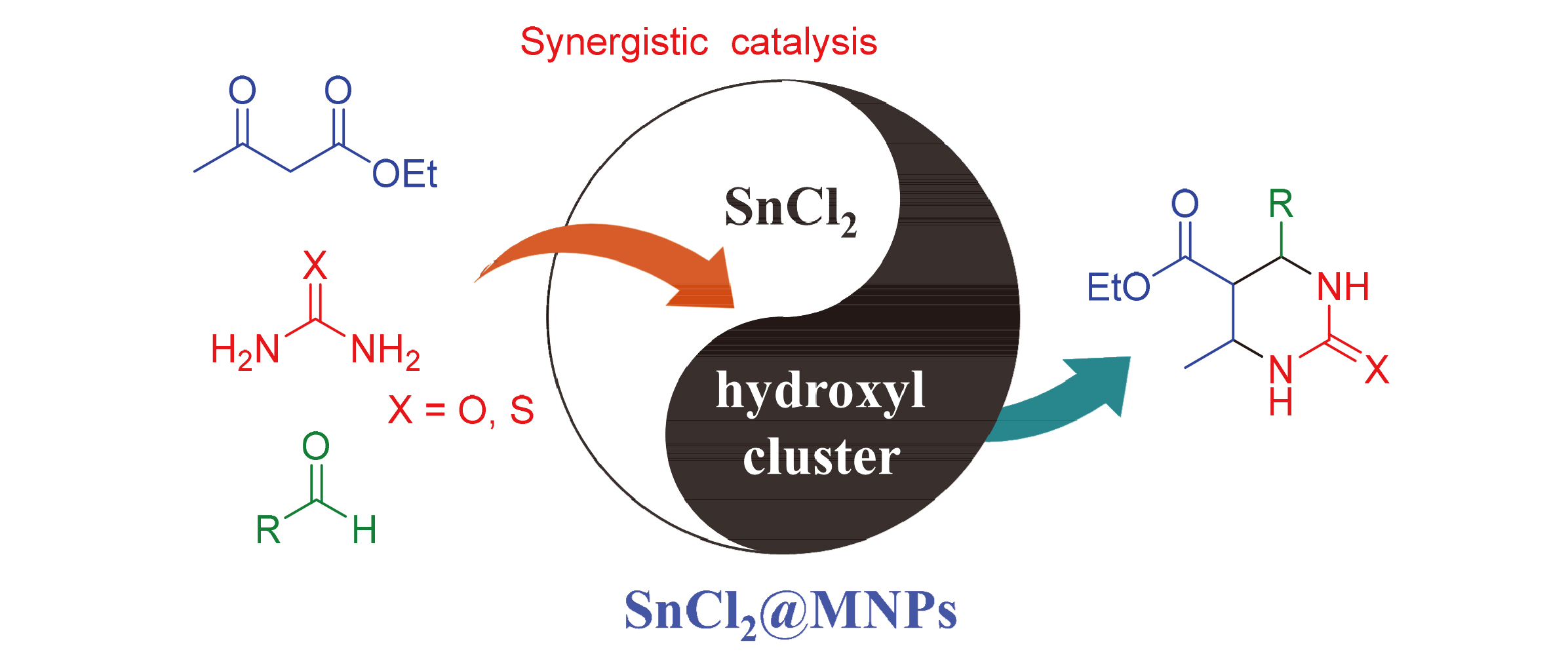| [1] |
Hela, S.; Younes, M.; Ridhaben, S. Arab. J. Chem. 2016, 9,S510.
doi: 10.1016/j.arabjc.2011.06.010
|
| [2] |
Zhang,Y. H.; Wang, B.; Zhang,X. M.; Huang,J. B.; Liu,C. J. Molecules 2015, 20,3811.
doi: 10.3390/molecules20033811
|
| [3] |
Kuraitheerthakumaran, A.; Pazhamalai, S.; Gopalakrishnan, M. Arab. J. Chem. 2016, 9,S461.
doi: 10.1016/j.arabjc.2011.06.005
|
| [4] |
Biginelli, P. Gazz. Chim. Ital. 1893, 23,360.
|
| [5] |
Abdolkarim, Z.; Zahra, N. J. Mol. Liq. 2016, 216,364.
doi: 10.1016/j.molliq.2016.01.056
|
| [6] |
Lu, J.; Bai,Y. J.; Wang,Z. J.; Yang,B. Q.; Ma,H. R. Tetrahedron Lett. 2000, 41,9075.
doi: 10.1016/S0040-4039(00)01645-2
|
| [7] |
Wang,C. F.; Jiang, H.; Gong, H.; Wang,Z. C. Chin. J. Org. Chem. 2004, 24,333 (in Chinese).
|
|
( 王彩凤, 姜恒, 宫红, 王敏, 王之昌, 有机化学, 2004, 24,333.)
|
| [8] |
Pravinsing,S. G.; Bhikan,J. K.; Deepak,V. N.; Bhata,R. C. Pharma Chem. 2015, 7,241.
|
| [9] |
Li,S. N.; Zhao,W. X.; Liu,Y. J.; Liu,Z. Q.; Ying,A. G. Chin. J. Org. Chem. 2020, 40,1835 (in Chinese).
doi: 10.6023/cjoc202003010
|
|
( 李胜男, 赵雯辛, 刘玉静, 刘中秋, 应安国, 有机化学, 2020, 40,1835.)
|
| [10] |
Ying,A. G.; Li,S. N.; Liu,X. Q.; Wang, J.; Liu,Y. J.; Liu,Z. Q. J. Catal. 2020, 391,312.
doi: 10.1016/j.jcat.2020.08.031
|
| [11] |
Lu, J.; Ma,H. R.; Li,W. H. Chin. J. Org. Chem. 2000, 20,815 (in Chinese).
|
|
( 路军, 马怀让, 李万华, 有机化学, 2000, 20,815.)
|
| [12] |
Wang,J. C.; Han,H. Q. Polyurethane Ind. 2005, 20,11 (in Chinese).
|
|
( 王景存, 韩怀强 聚氨酯工业, 2005, 20,11.)
|
| [13] |
Lu, J.; Wang, F.; Bai, Y.; Li,W. H. Chin. J. Org. Chem. 2002, 22,788 (in Chinese).
|
|
( 路军, 王飞利, 白银娟, 李万华, 有机化学, 2002, 22,788.)
|
| [14] |
Ma, Y.; Qian, C.; Wang, L.; Yang, M. J. Org. Chem. 2000, 65,3864.
doi: 10.1021/jo9919052
|
| [15] |
Song,X. Y. The Brochure of Polyurethane Elastomer. Chemical Industry Press, Beijing, 2001, pp.652-653 (in Chinese).
|
|
( 宋向雁, 聚氨酯弹性体手册. 化学工业出版社, 北京, 2001, pp.652-653.)
|
| [16] |
Wang, M.; Song,J. L.; Liu, Y. Chem. Res. Appl. 2013, 25,1717.
|
| [17] |
Tao, G.; Xu,Y. H.; Zhu, B. Doctoral Expert Forum. 2013, 8,408 (in Chinese).
|
|
( 陶果, 徐友辉, 朱斌, 博士专家论坛., 2013, 8,408.)
|
| [18] |
Zheng,X. D. J. Baoji Univ. Arts Sci. (Nat. Sci. Ed.)2004, 24,194 (in Chinese).
|
|
( 郑旭东, 宝鸡文理学院学报(自然科学版), 2004, 24,194.)
|
| [19] |
Wang, X.; Dou,P. P.; Zhao, P.; Yi, D.; Ping, X. ChemSusChem 2009, 2,947.
doi: 10.1002/cssc.v2:10
|
| [20] |
Hasaninejad, A.; Zare, A.; Jafari, F.; Moosavi-Zare,A. R. Eur.-J. Chem. 2009, 6,459.
|
| [21] |
Tayebee, R.; Amini,M. M.; Ghadamgahi, M.; Armaghan, M. J. Mol. Catal. A:Chem. 2013, 366,266.
doi: 10.1016/j.molcata.2012.10.004
|
| [22] |
Ranu,B. C.; Hajra, A.; Jana, U. J. Org. Chem. 2000, 65,6270.
doi: 10.1021/jo000711f
|
| [23] |
Paraskar,A. S.; Dewkar,G. K.; Sudalai, A. Tetrahedron Lett. 2003, 44,3305.
doi: 10.1016/S0040-4039(03)00619-1
|
| [24] |
Hu,E. H.; Sidler,D. R.; Dolling,U. H. J. Org. Chem. 1998, 63,3454.
doi: 10.1021/jo970846u
|
| [25] |
Wang, R.; Liu,Z. Q. J. Org. Chem. 2012, 77,3952.
doi: 10.1021/jo300282y
|
 ), 应安国a,b,*(
), 应安国a,b,*( )
)
 ), An'guo Yinga,b(
), An'guo Yinga,b( )
)
